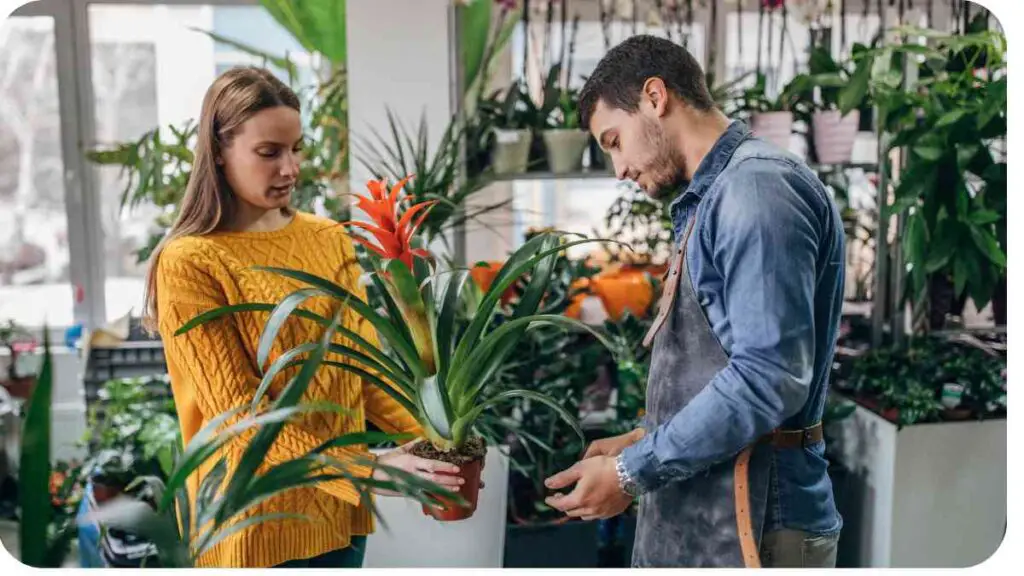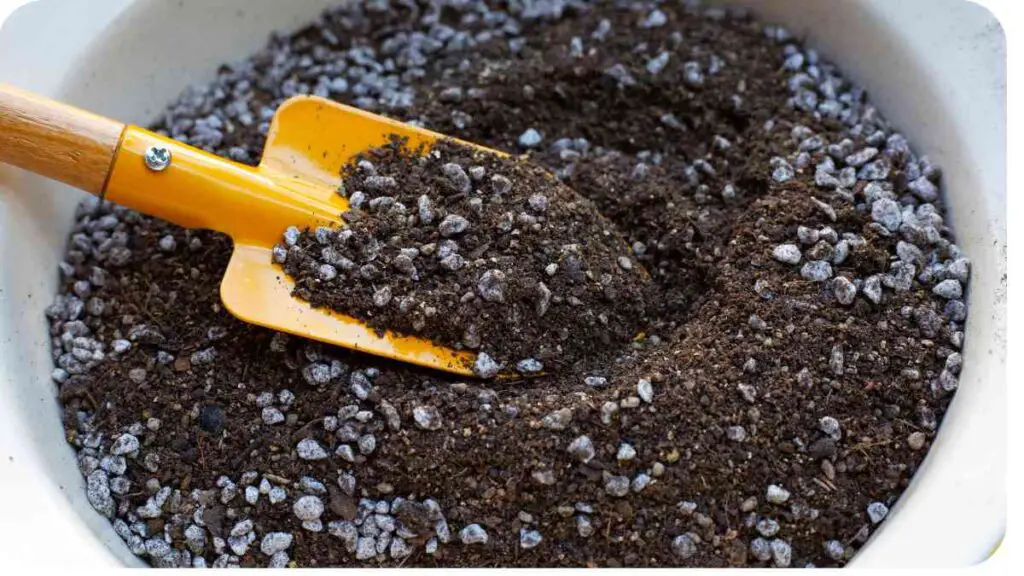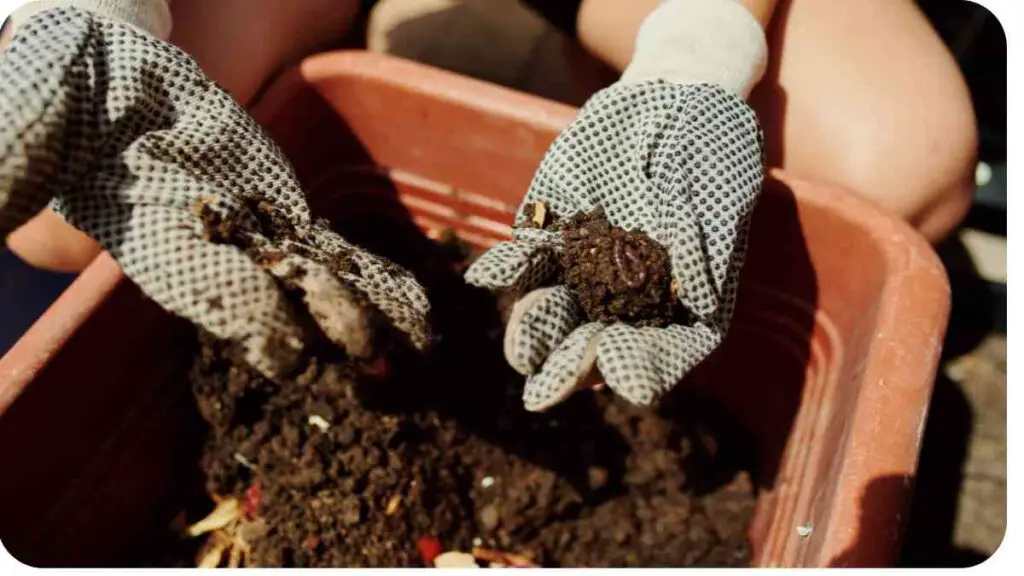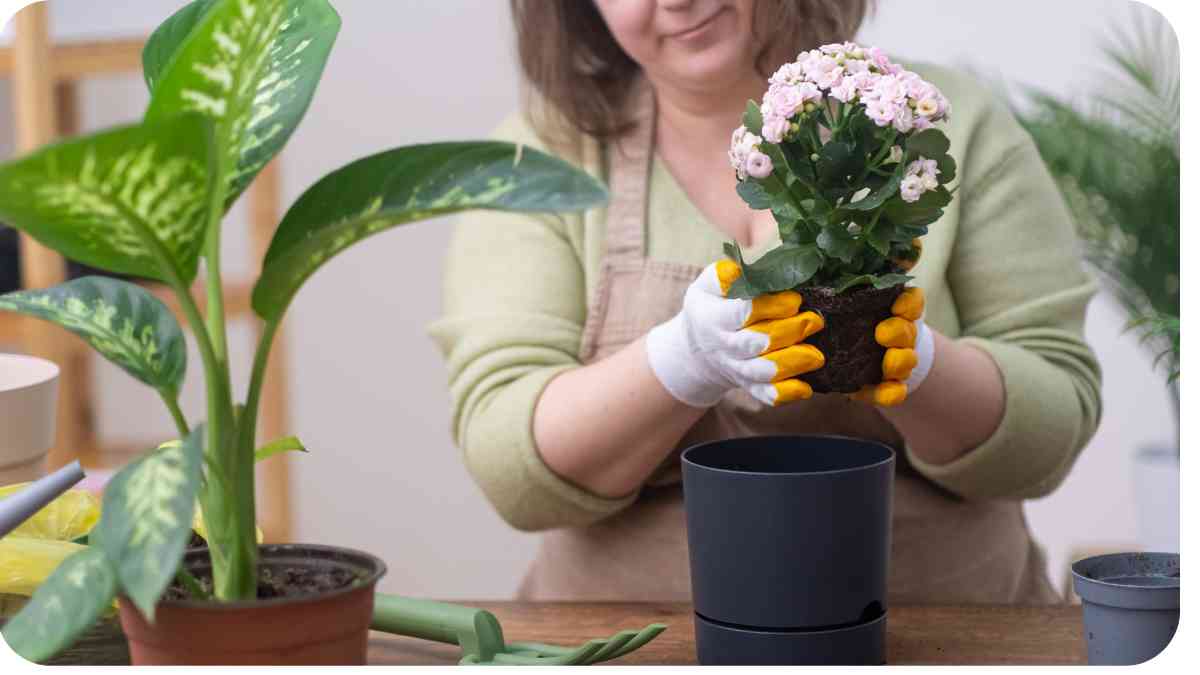Have you ever wondered how you could bring more life and color into your outdoor space without having to dig up your garden? Outdoor potted plants are a fantastic solution! Not only do they give you the freedom to experiment with different plant types, but they also allow you to move them around to catch the best sunlight or hide them from bad weather. Whether you’re limited on space or just love the aesthetic, potted plants can be the perfect fit for any outdoor area.
By raising outdoor potted plants, you can customize your gardening experience and keep your plants healthy and thriving, no matter the season or space. Let’s dive in and see how you can create your own thriving potted plant oasis outdoors!
| Key Takeaway |
|---|
| Choose the right pot with drainage holes to ensure proper root health. |
| Use a well-draining potting mix designed for containers, not garden soil. |
| Water regularly, but avoid overwatering especially in cooler months. |
| Provide the right amount of sunlight based on each plant’s needs. |
| Fertilize every 4-6 weeks during the growing season for healthy growth. |
| Protect plants from pests using natural treatments like neem oil or diatomaceous earth. |
| Use mulch to help retain moisture and insulate roots during hot or cold weather. |
| Move plants to shelter during extreme weather conditions, especially in winter. |
| Regularly inspect plants for signs of stress or pests and act quickly to resolve issues. |
| Keep plants in a location with good air circulation to prevent disease. |
Choosing the Right Pot for Your Plants

When it comes to raising outdoor potted plants, choosing the right pot is crucial. It’s not just about finding something that looks good; the pot needs to be functional and suitable for the specific plants you’re growing. So, what factors should you consider before selecting a pot for your outdoor plants?
2.1 Size and Material Considerations
The size of your pot directly impacts your plant’s health. If your pot is too small, your plants’ roots won’t have enough space to grow, which can lead to stunted growth or even root rot. On the other hand, if the pot is too large, the plant might struggle to establish roots because the soil will retain too much moisture, making it difficult for the plant to absorb nutrients.
As for the material, outdoor pots come in a variety of materials like plastic, terracotta, ceramic, and resin. Here’s a quick breakdown of each:
- Plastic pots: Lightweight and inexpensive, but can sometimes overheat in the sun.
- Terracotta pots: These are porous, which allows for great drainage but can dry out quickly in hot climates.
- Ceramic pots: Attractive and sturdy, but can be heavy and prone to cracking in freezing temperatures.
- Resin pots: Lightweight, durable, and insulated against temperature extremes, making them a solid choice for both hot and cold climates.
2.2 Drainage Importance
One of the most critical aspects of outdoor potted plant care is proper drainage. Without proper drainage, excess water can accumulate at the bottom of the pot, leading to root rot. Most pots come with drainage holes, but if yours doesn’t, you’ll need to create some to ensure that your plants don’t drown in water.
In addition, adding a layer of small rocks or gravel at the bottom of the pot before placing the soil helps prevent the holes from getting clogged with soil, allowing for better water flow.
2.3 Pot Selection Tips
| Pot Material | Pros | Cons | Best For |
|---|---|---|---|
| Plastic | Lightweight, inexpensive | Can overheat in direct sun | Small plants, budget-friendly |
| Terracotta | Porous, good drainage | Dries out quickly, heavy | Mediterranean, drought-tolerant |
| Ceramic | Attractive, sturdy | Heavy, may crack in winter | Decorative, sturdy plants |
| Resin | Durable, temperature-resistant | Lightweight, less aesthetic appeal | Cold and hot climates, easy to move |
Best Soil Mix for Outdoor Potted Plants

You could have the best pot in the world, but if your soil isn’t right, your plants will struggle. Choosing the right soil mix is critical to ensuring your plants get the nutrients and moisture they need to thrive.
3.1 Types of Soil Mixes
The soil mix you choose for your outdoor potted plants depends on the type of plant you’re growing. For instance, succulents and cacti need a very different mix than vegetables or flowering plants. Here’s a quick guide to common types of soil mixes:
- General Potting Mix: Great for most plants, including flowers, vegetables, and herbs.
- Cactus Mix: Contains sand or perlite for excellent drainage and is ideal for cacti and succulents.
- Orchid Mix: Contains bark or sphagnum moss, perfect for orchids and other epiphytic plants.
3.2 How to Improve Soil Drainage
Even if you buy a good quality potting mix, sometimes it might still retain too much water, especially if you’re growing plants that prefer drier conditions. To improve soil drainage, consider mixing in perlite or coarse sand. These materials help create air pockets in the soil, allowing excess water to drain through.
3.3 Recommended Soil Mix Ingredients
| Plant Type | Soil Mix Ingredients | Key Feature |
|---|---|---|
| General Plants | Peat moss, perlite, compost, sand | Balanced for most types of plants |
| Cacti/Succulents | Sand, perlite, small pebbles | Excellent drainage for dry-loving plants |
| Orchids | Sphagnum moss, bark, perlite | Good air circulation and moisture retention |
Selecting the Perfect Plants for Containers
When choosing plants for outdoor pots, it’s important to pick the right plants that suit both the climate and the specific conditions in your space. Sunlight, water needs, and temperature tolerance play key roles in your plant selection.
4.1 Sunlight Requirements
The amount of sunlight your plants need varies from one plant to another. Before placing your plants outdoors, observe how much sunlight your space receives throughout the day. You might have:
- Full Sun: 6+ hours of direct sunlight.
- Partial Shade: 3-6 hours of sunlight, or filtered light.
- Full Shade: Less than 3 hours of direct sunlight.
It’s important to choose plants that match the sunlight exposure in your space. For example, if you have a sunny patio, consider sun-loving plants like petunias, marigolds, or geraniums. If your space is more shaded, opt for shade-tolerant plants like ferns or hostas.
4.2 Climate Considerations
Different plants have different climate needs. Some plants, like succulents, thrive in hot, dry conditions, while others, like ferns, prefer cooler, humid environments. Be sure to choose plants that are suited to your local climate.
4.3 Seasonal Plants for Outdoor Pots
| Plant Type | Best For | Sunlight | Ideal Temperature Range |
|---|---|---|---|
| Petunias | Flowers | Full Sun | 60°F – 75°F |
| Succulents | Low-maintenance | Full Sun/Partial Shade | 50°F – 90°F |
| Ferns | Foliage | Shade | 50°F – 70°F |
| Herbs (Basil) | Edible | Full Sun | 65°F – 85°F |
Watering Outdoor Potted Plants
Watering your outdoor potted plants properly is essential to their growth. Too little water, and they’ll wilt; too much, and they’ll drown. So, how do you get it just right?
5.1 How Often Should You Water?
The watering needs of your plants depend on factors like the type of plant, the weather, and the size of the pot. On hot, sunny days, you may need to water your plants daily. On cooler days or rainy periods, you can water less frequently. As a general rule, water when the top inch of soil feels dry to the touch.
5.2 How to Check Soil Moisture
To make sure you’re not over- or under-watering, you can check the moisture level of the soil by sticking your finger into the soil about an inch deep. If it feels dry, it’s time to water. If it feels moist, wait a day or two before checking again.
5.3 Watering Techniques for Optimal Growth
| Plant Type | Watering Frequency | Tips for Watering |
|---|---|---|
| Succulents | Every 7-10 days | Water thoroughly, but allow soil to dry between waterings |
| Tomatoes | Every 2-3 days in summer | Water at the base, not on the leaves |
| Herbs (Basil) | Every 1-2 days | Keep the soil evenly moist, not soggy |
Fertilizing Outdoor Potted Plants

Fertilizing is like giving your plants a multivitamin. While healthy soil provides essential nutrients, potted plants rely more heavily on you to supply the nutrients they need, as they’re restricted to the limited soil in the pot.
6.1 When to Fertilize
For outdoor potted plants, it’s important to fertilize regularly but not excessively. Generally, you should fertilize every 4-6 weeks during the growing season (spring and summer) and reduce this frequency in the fall and winter when plants are resting.
The key is to use the right fertilizer for the type of plant you’re growing. For example, flowering plants and vegetables often require fertilizers higher in phosphorus to promote blooming and fruiting, while leafy greens benefit from nitrogen-rich fertilizers.
6.2 Types of Fertilizers
There are two main types of fertilizers you can use for outdoor potted plants:
- Liquid Fertilizers: Easy to apply, they’re absorbed quickly by the plants but often need to be applied more frequently.
- Slow-Release Fertilizers: These provide nutrients over a longer period, making them ideal for busy gardeners. However, they may not offer as quick results as liquid fertilizers.
6.3 Fertilizing Dos and Don’ts
| Fertilizer Type | Pros | Cons | Best Use |
|---|---|---|---|
| Liquid Fertilizer | Fast-acting, easy to use | Needs frequent reapplication | Quick nutrient boost for plants |
| Slow-Release Fertilizer | Lasts longer, less frequent application | Can be expensive and less precise | Ideal for extended feeding |
Protecting Outdoor Potted Plants from Pests
Pests can be a nightmare for outdoor plants, particularly when they’re confined to pots. From aphids to snails, keeping pests at bay is part of the responsibility of raising healthy plants.
7.1 Common Pests
Some pests are more common in outdoor containers than others. Here’s a quick rundown of what to look out for:
- Aphids: Tiny insects that suck plant juices, causing leaves to curl and turn yellow.
- Snails and Slugs: Love moist environments and can chew holes in your plants’ leaves.
- Whiteflies: Small white insects that fly up when disturbed and weaken plants by feeding on their sap.
7.2 Natural Pest Control Methods
Instead of reaching for chemical pesticides, which can harm beneficial insects, try these natural methods for controlling pests:
- Neem Oil: This natural oil works as an insect repellent and is safe for both plants and the environment.
- Diatomaceous Earth: A natural, powdery substance that works well against slugs and snails by dehydrating them.
- Companion Planting: Planting herbs like basil or marigolds near other plants can deter pests like aphids and whiteflies.
7.3 Pest Control Solutions
| Pest Type | Symptoms | Natural Treatment Options |
|---|---|---|
| Aphids | Yellowing leaves, curled foliage | Neem oil, water spray |
| Snails/Slugs | Holes in leaves | Diatomaceous earth, copper tape |
| Whiteflies | Small white insects, yellowing leaves | Companion planting, neem oil |
Seasonal Care for Outdoor Potted Plants
Taking care of your outdoor potted plants isn’t a one-time job. Throughout the seasons, you’ll need to make adjustments to how you care for them to ensure they thrive.
8.1 Summer Care
During the summer, outdoor plants will be in their peak growing season. Here are a few tips for keeping your plants happy during the warmer months:
- Water More Frequently: Plants in pots can dry out quickly in the heat. Check the moisture level of the soil regularly and water as needed.
- Shady Spot for Hot Days: If the sun is too harsh, consider moving your potted plants to a shaded area during the hottest parts of the day.
- Fertilize Regularly: Summer is a good time to give your plants the nutrients they need to grow strong, vibrant, and healthy.
8.2 Winter Care
Winter is when potted plants need extra attention to stay healthy. If you’re in a region with freezing temperatures, you’ll need to prepare your plants for the cold.
- Move to Shelter: If possible, move pots to a more sheltered area to protect them from frost and freezing winds.
- Reduce Watering: Plants grow more slowly in winter, so they need less water. Water just enough to keep the soil from drying out completely.
- Use Mulch: Adding mulch on top of the soil can help insulate the roots and retain moisture during the colder months.
8.3 Seasonal Plant Care Guide (Table)
| Season | Summer Care Tips | Winter Care Tips |
|---|---|---|
| Summer | Water frequently, fertilize regularly, provide shade if necessary | |
| Winter | Water less frequently, move plants to shelter, use mulch | Reduce watering, insulate roots, minimize exposure to cold |
Conclusion
Raising outdoor potted plants is a rewarding yet challenging endeavor. From selecting the right pots to understanding the soil and water needs, and protecting your plants from pests, each step requires careful attention. By taking these factors into account, you can ensure that your outdoor potted plants will thrive and grow into vibrant, healthy specimens.
Remember, gardening is a journey, not a destination. Don’t be discouraged by setbacks and take time to learn what works best for your specific plants and environment. With patience, attention, and a little love, your outdoor garden will flourish!
Further Reading
If you want to dive deeper into the world of outdoor potted plants, here are some useful resources:
Gilmour: Potted Plants Tips
This guide from Gilmour offers practical tips on how to care for potted plants, from watering techniques to choosing the right type of pot. A great starting point for anyone looking to master the basics of container gardening.
Blooming Lucky: Caring for Outdoor Potted Plants – My Secrets
This article shares personal insights and secrets on keeping outdoor potted plants thriving. From watering strategies to the best plant varieties for containers, this guide provides useful tips straight from an experienced gardener.
Mill Creek Gardens: Outdoor Plants & Potting Tips and Tricks
Mill Creek Gardens offers expert advice on potting and caring for outdoor plants. Learn about selecting the right containers, soil, and maintenance to keep your outdoor potted plants healthy and flourishing all year round.
FAQs
What are the best pots for outdoor plants?
When selecting pots for outdoor plants, choose ones with drainage holes to prevent water from pooling at the bottom. Materials like terra cotta, ceramic, and plastic are great, but make sure the size is appropriate for your plant’s root system.
How often should I water my outdoor potted plants?
Watering depends on the climate, the size of the pot, and the type of plant. However, a general rule is to check the soil every day in hot weather and water when it feels dry about an inch down. During cooler months, reduce the frequency to prevent overwatering.
Can I use regular garden soil in outdoor pots?
While garden soil can be used, it’s not recommended. It’s usually too dense for pots and can retain too much water, which may lead to root rot. Instead, use a potting mix designed specifically for containers, which provides better drainage and aeration.
How do I keep outdoor potted plants from drying out?
To prevent your plants from drying out, make sure they’re placed in a location that’s suitable for their sunlight needs. Use mulch on the surface of the soil to help retain moisture, and choose pots with good drainage to avoid waterlogged roots.
How can I protect my outdoor potted plants from pests?
To keep pests away, regularly inspect your plants and use organic methods like neem oil or diatomaceous earth. Also, consider companion planting to naturally deter pests. Keeping plants healthy and well-maintained is the best defense against infestations.

For 15 years, Hellen James has worked in the gardening industry as an expert and landscape designer. During her career, she has worked for a variety of businesses that specialize in landscaping and gardening from small firms to large corporations.

